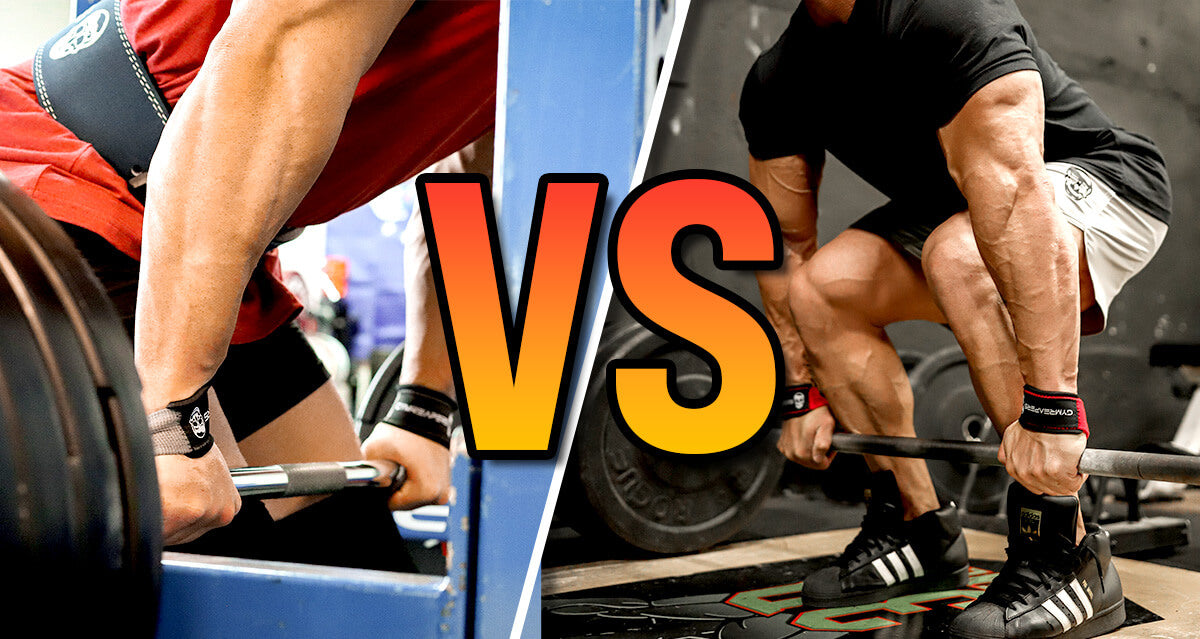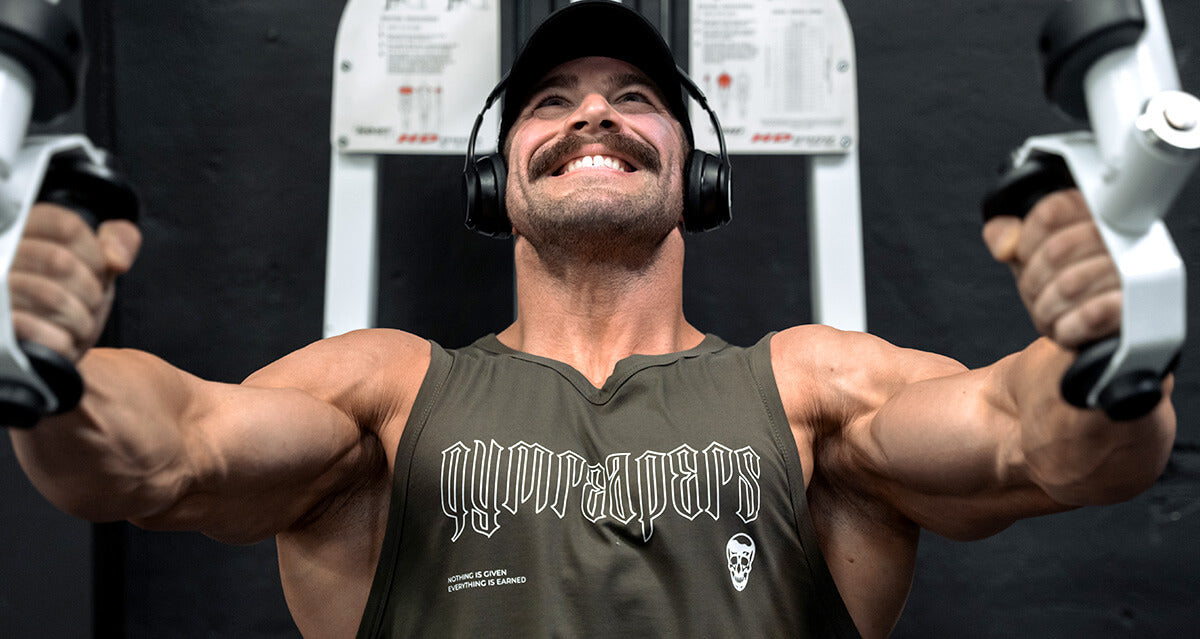Rack pulls and deadlifts target similar muscle groups but differ in execution, range of motion, and specific benefits. Understanding these differences can help you choose the proper exercise for your fitness goals.
This article explores the key distinctions between rack pulls and deadlifts, their benefits and drawbacks, and how to incorporate them into your workout routine.
Key Takeaways
Rack Pull
What Is It?
A rack pull is a compound exercise similar to the deadlift, but it involves lifting a barbell from a raised position, typically from knee height or just below.
The barbell is placed on the safety pins of a power rack, which reduces the range of motion compared to a conventional deadlift.
Rack pulls focus on the top portion (the lockout portion) of the deadlift, primarily targeting the glutes, hamstrings, and lower back.
How To
- Adjust the safety pins in the power rack to a height between your knee and mid-shin, depending on your goal.
- Place the barbell on the safety pins and load it with the desired weight.
- Stand with your feet shoulder-width apart, with the barbell close to your shins.
- Use a double overhand or mixed grip to hold the barbell slightly wider than shoulder-width apart.
- Make sure your armpit is above the barbell.
- Take a deep breath and brace your core to prepare for the lift.
- Push through your feet, extend your hips, and pull the barbell upwards, keeping it close to your body.
- Once the barbell reaches your hip, lock out your hips by squeezing your glutes to the bar.
- Carefully lower the barbell back onto the safety pins with control.
Should I Use Straps on Rack Pulls?
The rack pull is a tool for overloading the lock-out portion of the deadlift by using heavier loads in a smaller range of motion. To get the most out of this movement, I recommend using lifting straps so that your grip is not a limiting factor.
Benefits
The benefits of rack pulls are:
- They emphasize the posterior chain. Rack pulls emphasize the glutes and hamstrings so that lifters can build strength in their lockout.
- They place less strain on the lower back. With a shorter range of motion, rack pulls place less stress on the lower back, making them a safer alternative for those with back issues.
- They can improve grip strength. Those with grip issues can use rack pulls (without straps) to train their grip with heavier loads.
Drawbacks
The drawbacks of rack pulls are:
- They can damage your equipment. Rack pulls can damage the barbell in the long term if extremely heavy loads are used and how aggressively you rerack the bar.
- They are less functional. The shortened range of motion makes rack pulls less transferable to other movements and everyday activities.
Deadlift
What Is It?
A deadlift is a popular full-body strength training exercise where you lift a barbell from the ground to a standing position.
This compound movement targets multiple muscle groups, including the hamstrings, glutes, back, and quadriceps.
While there are variations, such as the sumo and romanian deadlift, this description focuses on the conventional deadlift.
How To
- Position the barbell on the floor and stand with your feet hip-width apart, toes pointing forward.
- Bend at the hips and knees to lower your body, gripping the bar just outside your knees with a double overhand or mixed grip.
- Take a deep breath and brace your core while keeping your shoulders down and arms taut.
- Drive through your whole foot to extend your hips and knees while keeping the bar close to your body.
- Stand up fully and lock out your hips and knees.
- Reverse the motion by pushing your hips back and lowering the bar with control to the ground.
Should You Wear a Weight Belt for Deadlifts?
Once you've mastered proper breathing and bracing, I recommend using a lifting belt to elevate your deadlifts. Maintaining intra-abdominal pressure is crucial for supporting the spine and reducing injury risk, especially during heavy lifts. A belt enhances this pressure, allowing you to brace your core more effectively by pushing your stomach against it, which improves your form and makes the lift feel lighter. A 1999 study by Cholewicki et al. found that wearing a weightlifting belt increases both intra-abdominal pressure and spinal stability.
Benefits
The benefits of deadlifts include:
- They build full-body strength. The deadlift is a full-body exercise primarily targeting the posterior chain and the quads.
- They improve functional fitness. The deadlift is a more functional movement, mimicking daily activities like lifting objects from the ground.
- They encourage movement competency. Deadlifts are a foundational movement with a solid carryover to other strength sports, including powerlifting, weightlifting, and strongman.
VERIFIED LEVER BELT REVIEWS
Drawbacks
The drawbacks of deadlifts include:
- They have a higher risk of injury. Poor form and inappropriate loading can lead to severe injuries.
- They require mobility, stability, and coordination. The deadlift requires proper technique and more hip mobility to perform safely, which can be challenging for beginners.
- They require more recovery. The full-body engagement of deadlifts can lead to longer recovery times, especially after heavy lifting sessions. The recovery time may interfere with other training days, specifically leg-focused training.

Rack Pulls vs. Deadlifts: Key Differences
The six key differences between rack pulls and deadlifts are:
Range of Motion
Rack pulls have a limited range of motion, typically from knee height or slightly below.
Deadlifts have a full range of motion, lifting the barbell from the floor. They may also require a wider stance for larger individuals, further elongating the range of motion at the hips.
Muscles Worked
Rack Pulls emphasize the posterior chain, including lower back, hamstrings, and glutes.
Deadlifts engage the posterior chain but through a more extended range of motion, specifically the hamstrings and glutes, to extend the hips, and they engage the quadriceps to extend your knees.
Equipment
Rack pulls require a power rack or similar setup to elevate the barbell.
Deadlifts only require a barbell and weight plates, or dumbbells or kettlebells, making them more versatile in different gym settings.
Loading
Rack pulls typically allow for heavier weights due to the reduced range of motion, whereas the fuller range of motion of deadlifts usually limits the amount of weight lifted.

Use Cases
Rack pulls isolate the posterior chain, so they are best used if your hip extension strength is a limiting factor in your deadlift performance.
Deadlifts are best for building overall strength, enhancing functional movement patterns, and engaging the entire posterior chain.
Are Rack Pulls or Deadlifts Better?
Rack Pulls are better for you if:
- You want to focus on building your glutes and hamstrings
- You want to focus on hip extension strength for strength and conditioning goals
- You are recovering from a lower back injury or want to reduce lower back strain
- You want to improve hip hinging to progress to the deadlift
Deadlifts are better for you if:
- You want to build overall strength and muscle mass across multiple muscle groups
- You want to improve functional fitness
- You eventually want to compete in strength sports, specifically powerlifting.
Can You Do Rack Pulls & Deadlifts in the Same Workout?
You can do rack pulls and deadlifts in the same workout; however, there are pros and cons that you should be aware of before making your final decision.
Pros
- Complementary Strength Development. Combining both exercises in the same workout can target different portions of the deadlift range of motion, enhancing overall strength.
- Variety. Adding both exercises can provide variety, keeping the workout engaging and well-rounded.
Cons
- Overtraining Risk. Performing both exercises in one session can increase the risk of overtraining, especially for the lower back and posterior chain. However, this is also dependent on total volume.
- Redundancy. Doing both can be redundant if you only need one of the variations to target your training objectives.
Sample Workout
Deadlifts: 3 sets of 5 reps, 4 reps left in reserve
Rack Pulls: 2 sets of 8 reps, 3 reps left in reserve
Lat Pulldown: 2 sets of 8-12 reps
Single Leg Hip Thrust: 2 sets of 10-12 reps per leg
Can Rack Pulls Replace Deadlifts?
Rack pulls can substitute deadlifts if your primary goal is to develop back strength, reduce lower back strain, or focus on lifting heavier loads with less technical complexity. However, they should not completely replace deadlifts if you aim to build overall lower body strength.
Citations
- Cholewicki J, Juluru K, Radebold A, Panjabi MM, McGill SM. Lumbar spine stability can be augmented with an abdominal belt and/or increased intra-abdominal pressure. Eur Spine J. 1999;8(5):388-95. doi: 10.1007/s005860050192. PMID: 10552322; PMCID: PMC3611203.













Hinterlasse einen Kommentar
Alle Kommentare werden vor der Veröffentlichung geprüft.
Diese Website ist durch hCaptcha geschützt und es gelten die allgemeinen Geschäftsbedingungen und Datenschutzbestimmungen von hCaptcha.